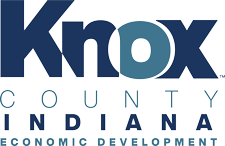By Chris Pfaff
(This article originally appeared on Inside Indiana Business)
For government and business leaders alike, the numbers are challenging. In addition to sufficient capital, an available and qualified workforce represent key factors in growing a region. Indiana and many other states face the dual challenges of an aging workforce and – with few exceptions – declining workforce numbers in the largest sectors: Gen Z, Millennials and Gen X. The handful of Indiana counties experiencing modest population growth draw on immigrant populations, not internal growth and development.
So how can Indiana compete and grow, especially regarding talent acquisition and retention?
Research shows attraction factors include the availability of good-paying jobs with high levels of satisfaction, and a high quality of life. If a region can pair these up with a lower cost of living (compared to the high cost of living in places like New York City, Los Angeles, or Silicon Valley), they hold a decisive advantage.
For Indiana, that provides a ray of hope, particularly in our present tight labor market. Hoosier regions can join forces (and in several cases already are) to adopt more aggressive positioning, recruiting, and retaining talent. Indiana also holds an advantage in the top two triggers identified for relocation: No. 1 – to have a better quality of life, and No. 2 – the capacity to be closer to family.
Here are some key considerations:
Since the recent pandemic, we know that employees are willing to travel further between home and work – especially if the job matches personal needs and attributes. This trend shows up in Stats Indiana data, where a major employer can attract daily worker migration from multiple counties. Knox County alone welcomes more than 3,000 commuters from surrounding communities. That’s good news in particular for rural counties, who are in competition with larger urban areas for professionals.
Cost of living ranks high
Indiana typically ranks high in best places to raise a family, which is important to many. With world-class universities and colleges across the state, Indiana graduates outstanding talent every year. Yet, we continue to struggle with how to retain that talent, and the answer often lies in the creation of high-quality jobs, matched with quality of life.
While quality of life issues are often thought of in terms of entertainment, the availability of both market rate and affordable housing figures high in quality of life. Nearly every county in Indiana faces housing issues in varying degrees, including availability of capital investment and local support. Resolving those challenges remains near the top of the list for many, as housing availability shows up consistently as a top lifestyle factor influencing a reason for qualified talent to relocate.
A city, county, or region cannot address everything at once, but here’s a short list of priorities to strive for: access to green spaces, cultural amenities, recreational opportunities, good schools, healthcare, and affordable housing. Add to this a walkable downtown, a vibrant arts scene, and attractive community events can all contribute to a strong sense of place, making the region more appealing to both individuals and families in the key Gen Z, Gen X, and Millennial demographics. Developing a community with all these elements is difficult, especially in smaller communities where resources are thin.
Focused education and training
Key data points to a critical consideration: the high-paying, high-impact jobs of the future will require skills and education beyond that of a current high school education. That means additional training and engagement.
Both Vincennes University and Ivy Tech campuses, and onsite training are making a difference here, especially in upskilling current employees to reach higher wages and job satisfaction.
Recent research also shows that safety, work-life balance, and the availability of high-quality healthcare are high among attraction and retention factors. Rural areas hold a general advantage in the first two, though several Indiana counties presently are medically underserved, which represents an attraction challenge. This issue will only get worse if we don’t work with our community hospitals and health networks to address the ever-rising cost of doing business under the current system.
Don’t forget the brand
In a tight labor market, potential talent faces considerable marketplace noise. A city, county, or region needs to consider steps in how to make the positive attributes of their quality of place and opportunity stand out.
Every region has a story to tell, including reaching both current residents and potential talent considering relocation. A strong, authentic regional brand that communicates the area’s unique identity can help draw in new talent. Brand building should consider both potential new residents, and also the people currently living in a region, who can re-tell the story of a community through their online digital megaphones. Promoting an attractive brand can also reach former residents and local high school and college alumni who may be looking for a refreshed opportunity.
As birthrates and population decline over the coming decades, the time to invest in talent attraction and retention is now. Focus on what really matters, and we can grow Indiana communities
A long-time economic development and defense industry professional, Chris Pfaff is Chief Executive Officer of Knox County Indiana Economic Development.

